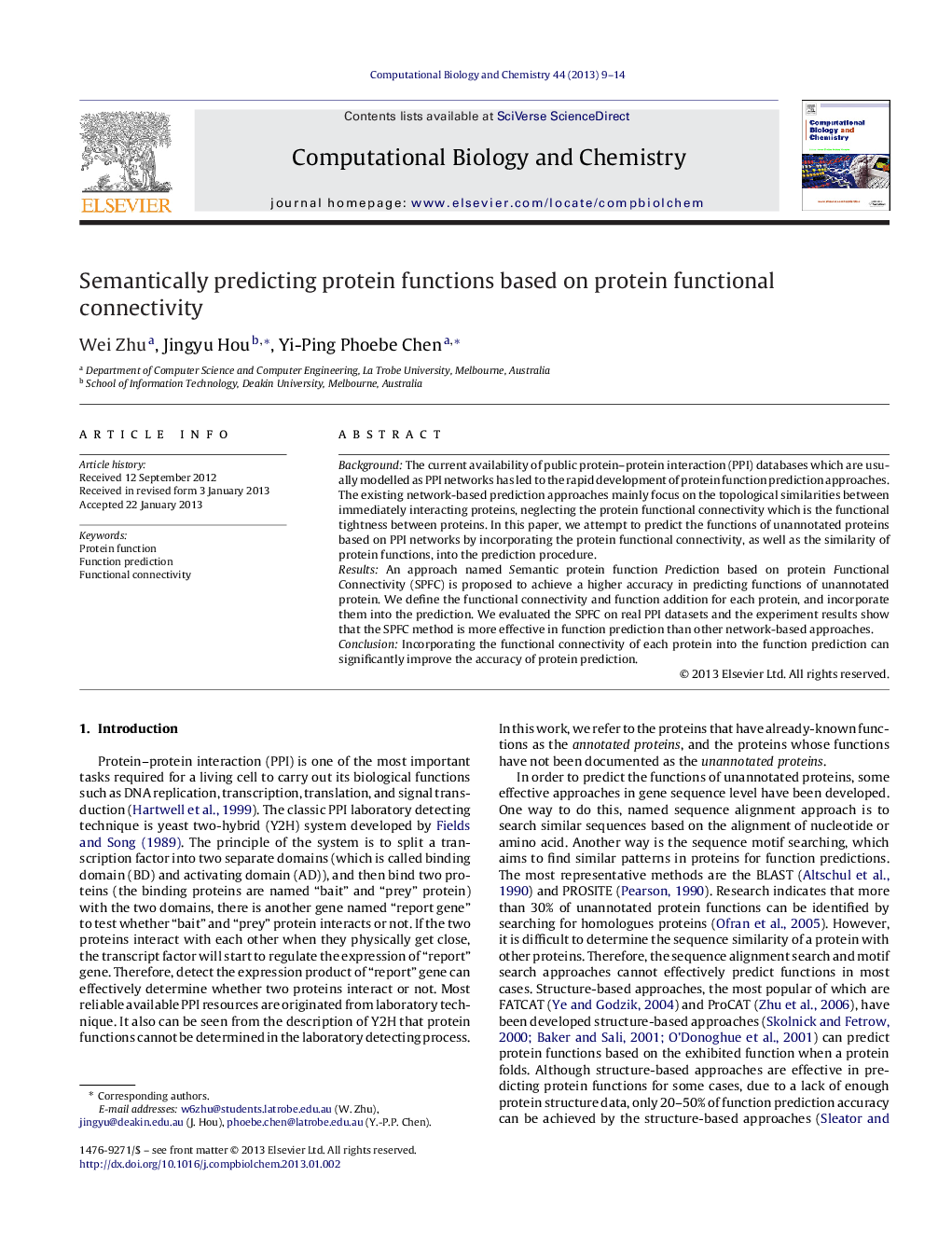| Article ID | Journal | Published Year | Pages | File Type |
|---|---|---|---|---|
| 15109 | Computational Biology and Chemistry | 2013 | 6 Pages |
BackgroundThe current availability of public protein–protein interaction (PPI) databases which are usually modelled as PPI networks has led to the rapid development of protein function prediction approaches. The existing network-based prediction approaches mainly focus on the topological similarities between immediately interacting proteins, neglecting the protein functional connectivity which is the functional tightness between proteins. In this paper, we attempt to predict the functions of unannotated proteins based on PPI networks by incorporating the protein functional connectivity, as well as the similarity of protein functions, into the prediction procedure.ResultsAn approach named Semantic protein function Prediction based on protein Functional Connectivity (SPFC) is proposed to achieve a higher accuracy in predicting functions of unannotated protein. We define the functional connectivity and function addition for each protein, and incorporate them into the prediction. We evaluated the SPFC on real PPI datasets and the experiment results show that the SPFC method is more effective in function prediction than other network-based approaches.ConclusionIncorporating the functional connectivity of each protein into the function prediction can significantly improve the accuracy of protein prediction.
Graphical abstractFigure optionsDownload full-size imageDownload as PowerPoint slideHighlights► We defined functional connectivity in protein–protein interaction network to measure the semantic relationships between proteins and its neighbours. ► We defined function addition to measure the strength of a function correlating with other functions in a protein. ► We integrate functional connectivity and function addition to effectively predict protein functions.
